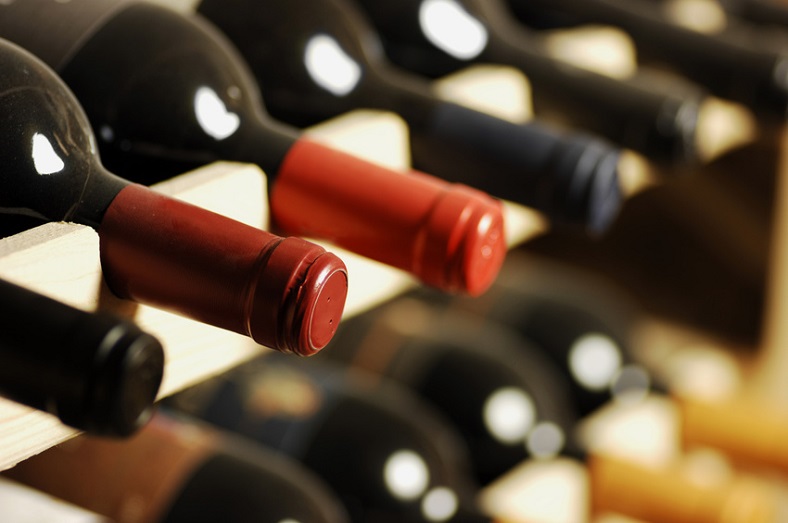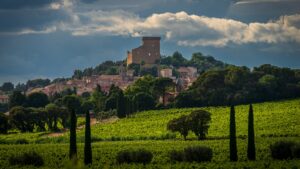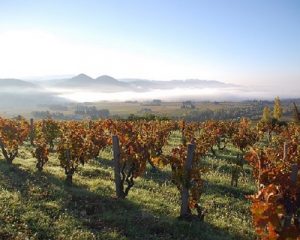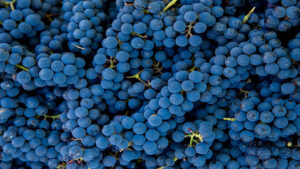
The 2017 vintage is bottled and ready to buy. iDealwine is here to guide you through this vintage region by region. We start by looking at the more northern French regions: Burgundy, Beaujolais, Loire Valley, Champagne, Alsace, Jura and Savoie.
Burgundy
After a series of somewhat insufficient vintages, whether due to an overly sunny year like 2015 or a frosty one like 2016, Burgundian winemakers can breathe easier in 2017. The first reason for a winemaker to smile, whatever region they work in, is to have produced a yield of the right size. This year unfolded without any major incidents and with a largely worry-free harvesting period, after a summer that was sunny without concerns about water (as in 2015). The harvest turned out to be very healthy with almost all producing deep levels of maturity.
At the same time, a distinction needs to be made between the Chardonnays and Pinots. This vintage is clearly one of good quality for Burgundian white wines, particularly those from geographical extremes such as Chablis and Mâconnais (where the wines are clearly superior to those of 2015 and 2016), even if these two regions were disturbed at the start of the season by some damaging frost. Meursault equally produced some beautiful wines. However, the Pinot Noir won’t be at the same standard for the reds. The yields were plentiful and it seems that some of the wines could be relatively diluted. This phenomenon is more marked in Côte de Nuits. For the best, which will not suffer from dilution, their wines will be more tender than those of 2016, so they should be enjoyed before this latter vintage. On the other hand, Côte Chalonnaise saw great success with its reds, particularly in Givry and Rully, but the whites are equally successful. It’s clear that this region is increasingly a priority for well-informed wine lovers…
Reds: 16/20
Whites: 17/20
See all of our Burgundy wines here
Beaujolais
As was the case in 2016, Beaujolais was once again hit by hailstorms in the second half of July, causing significant damage in Fleurie, Moulin-à-Vent, Morgon and Chiroubles, though the latter two to a lesser extent. It’s even more of a shame since the vintage began well before facing icy cold snaps which were common in vineyards throughout France. At the beginning of July, vine health was almost perfect and the harvest full of promise. The hail was however to dash the hopes of many winemakers.
Fortunately, beyond the most affected areas, the vintage developed more favourably, as it had started, apart from perhaps in Brouilly and Côte-de-Brouilly where, paradoxically, the shortage of water made the vines suffer somewhat, leading to the growth of small but very concentrated berries.
At the beginning of September, the harvests took place in optimal climatic conditions and the grapes from the areas that didn’t see hail were picked in perfect health. The appellations and areas untouched by hail produced denser wines with more depth than those of 2016, with a pleasant level of concentration and sometimes acidity a little weaker than usual due to higher temperatures.
There are some lovely wines from Morgon, but often in smaller quantities than usual, as well as from Chiroubles and Régné. Moulin-à-Vent and Fleuries are more irregular, but there are some superb cuvées from producers who were particularly rigorous in sorting after the climatic disturbances. Brouilly and Côte-de-Brouilly have sometimes produced atypical wines, of almost southern character. Juliénas and the other appellations are also quite irregular. In a year like this one, unless you already know the quality of a winemaker that you’ve followed for several years, it would be prudent to taste before you buy. Don’t forget that, despite the difficulties of this vintage, the good wines will still be very good indeed, better in any case than those of the year before.
Reds: 16/20
See all of our Beaujolais wines here
Loire Valley
The Loire didn’t manage to escape from the weather conditions that blighted the majority of France’s vineyards: a mild winter, an early bud break, a deadly frost in April, then a lovely summer which brought early harvests in great conditions, with largely very healthy grapes. The whites, picked earlier, didn’t suffer from the September rain, but they were in fact affected by the summer heat, meaning that they are generally ‘larger’ and less taut than in 2016, for example. And probably with less aging potential. But these will undoubtedly still be pleasant wines whilst they’re young. In the same vein, dessert wines won’t be reaching the heights of the vintages richer in noble rot, but most of them offer cuvées that are slightly weaker but probably easier to drink, sooner than usual.
Whilst not exceptional, the reds will be of a good quality, with the lower end cuvées, and the fruity, ‘easier’ wines to be enjoyed young. The more ambitious wines of Chinon, Bourgeuil and Saumur-Champigny often deliver lovely concentrations and can be aged, though without reaching the peak of the region’s best years.
Reds: 16/20
Whites: 15/20
Dessert wines: 15/20
See all of our Loire Valley wines here
Champagne
As in every year, it is worth underlining two particularities of the Champagne region which always puts the appreciation of the most recent vintage into perspective. The first is that the vast majority of bottles of Champagne are actually not vintage at all, instead being the product of blending several vintages. The idea is that the combination of vintages allows for a taste that changes very little. The qualities (or defects) of a single vintage are therefore not critical. The second particularity is that champagne is a ‘transformed’ wine and so to judge the true quality of a vintage, there are only two solutions: either taste the year’s still wines after a few months of vinification, before they’ve been made into champagne (though this would give an incomplete impression), or wait for the end product of a vintage champagne, this being several years later…
2017 (like the year before it) was marked here by significant frost at the end of April (many winemakers experienced the same mishap at the same time). The rest of the climatic cycle turned out to be promising before heavy rain at the end of August came to dash all hopes. Many plots faced the problem of rotting, leading the best producers to carry out meticulous sorting in their harvests. And the vintage cuvées will undoubtedly be relatively rare. The Pinot Meuniers and the Marne Valley seem to have suffered the most, whilst in the south of Reims and parts of Aube, the Pinot Noir appears to have better resisted the difficult conditions. And generally speaking, compared to 2016 when the opposite was true, the Chardonnay will be pleasant, perhaps less dense and deep than in a fine vintage, but still producing some splendid cuvées, particularly in Côte des Blancs (Avize, Le Mesnil, etc)
Blancs de noirs: 15/20
Blancs de blancs: 16/20
Alsace
2017 is one of the five most precocious vintages of the last 40 years in Alsace (the others being 2003, 2007, 2009 and 2011) in terms of flowering. The conditions were a little spoiled after this with some quite considerable ice in April which largely explains the smaller yield. The harvests, on the other hand, were completed without any problems in the climate.
As is often the case when conditions are difficult, the finer terroirs come out of it better, particularly the numerous localities and grands crus, almost always located on steep slopes which were spared the ice. Maturing was more challenging for vines on the plains.
The best Riesling crus produced very good dry wines with great cellaring potential thanks to their wonderful balance. The same goes for the cuvées of Pinot Gris and Gewurztraminer. The Sylvaner, often planted on plots of slightly lower quality, is more irregular. On the other hand, it seems that the dry Muscat was in its element in this vintage and it has given some really lovely wines.
The reds of this region, also rarely planted on the best slopes, largely suffered from the lacking elements of this vintage. They sometimes give off bitter notes and can be a little underripe. You’ll have to try before you buy, as some of them have turned out quite well after all.
Dry whites: 17/20
Sweet whites: 15/20
Reds: 15/20
See all of our Alsace wines here
Jura/Savoy
If the frost touched the whole of France in April, Jura is undoubtedly the region that suffered the most, since it must be noted that this weather caused a 50% loss of the harvest. All of the grape varieties were affected but Poulsard sustained the heaviest losses. After a very hot summer, the harvests were undertaken in excellent conditions and generally the quality of wines produced is of a very good standard, with cuvées carefully balanced between acidity and maturity. The reds deliver great concentration, density and depth. The whites are perhaps a bit ‘easier’, but still of a good standard.
Savoy also suffered from the devastating frost at the end of April. The rest of the year was much more clement with a particularly warm summer and excellent harvesting conditions which allowed for the production of quantities that were limited but of good quality. As in Jura, it’s the reds that come out on top here. The Mondeuse are particularly juicy with balanced substance and lovely ripe tannins. The whites are delicate, fine and aromatic, without being austere. Some particular success in Chignin, Apremont and Abîmes.
Reds: 17/20
Whites: 16/20



